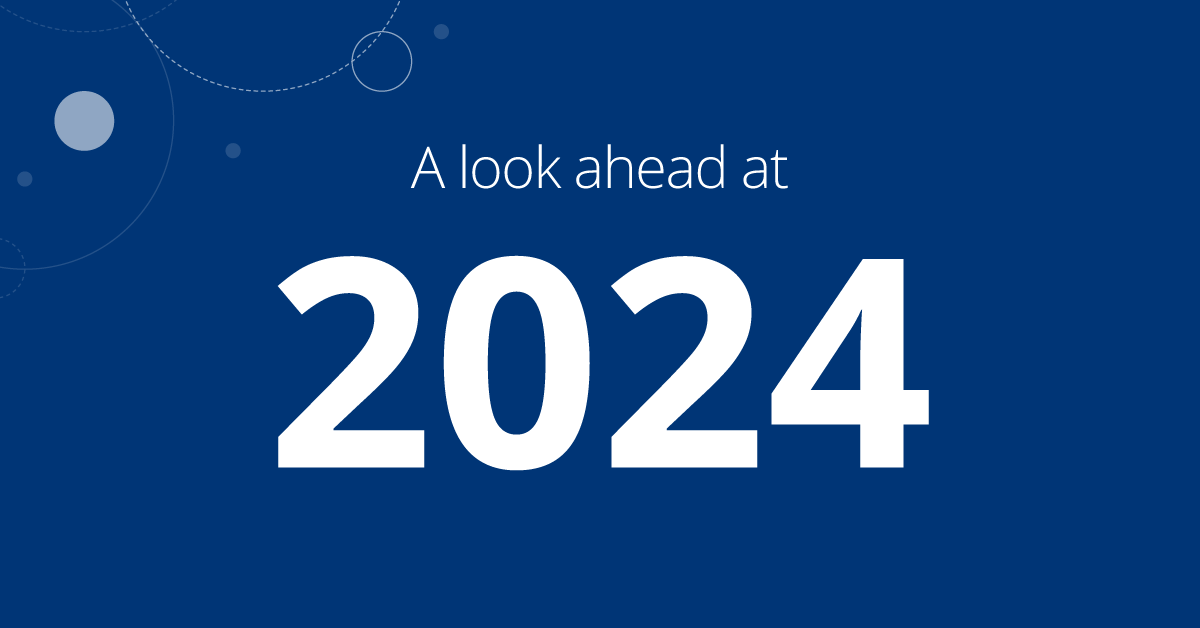
January 24, 2024
Media Industry Trends to Watch in 2024
While expectations are high for the anticipated increase in political ad spend for this year’s elections, that influx of cash is just one of several trends to watch in 2024. Revenue is expected to remain strong for local broadcast TV and radio, digital TV viewership will continue to increase, and the number of ad-supported streaming services will continue to rise. And generative AI isn’t just for content creation – planning, targeting, and reporting processes will begin to leverage the power of AI to automate manual and time-consuming analyses.
The potential impact of AI remains top of mind
As a major sticking point in both the writers’ and actors’ strikes last year, the use of AI in content creation was a hot topic in 2023. The conversation will continue in 2024, with 32% of North American marketers believing that AI will have a significant impact this year. But that impact will extend beyond AI’s creative potential for content ideation and creation. With its ability to analyze massive quantities of data very quickly, generative AI will make inroads in predicting audience behavior for planning, targeting, personalization, and reporting.
Radio will demonstrate its resilience
Even though 2024 revenue forecasts remain flat or show only a slight increase due to political, 71% of radio advertisers say they will spend the same or more this year, generating $15.30 billion in total ad revenue. Why? Because AM/FM radio reaches 91% of all 18+ Americans monthly. And since most listening occurs in the car, listeners have high purchase intent, meaning radio will remain extremely effective for local advertisers.
Streaming and CTV growth will continue
Ad-supported streaming growth will continue in 2024, across both free and subscription services, with ad-supported video-on-demand (VOD) viewers expected to reach 180.2 million this year. Amazon introduced advertising to Amazon Prime Video earlier this month, which is expected to add $3.13 billion in ad revenue to their expected overall growth of 85.5% this year, across Prime Video, Freevee, Twitch, and Fire TV. The move makes Amazon the third largest streaming ad seller, behind only Alphabet and The Walt Disney Co. Apple TV+ is the last major subscription streaming service without an ad-supported tier, though they’re expected to join the fray soon.
Meanwhile, Dentsu is predicting double-digit growth in CTV viewership, anticipating a 32.2% increase. The corresponding revenue growth is expected to reach 39.5% for CTV/OTT, according to the BIA, the highest of any media platform, with over-the-air broadcast TV growth expected at 30%, digital TV station revenue improving by 24.3%, and local cable TV increasing by 19.7%.
That growth will also highlight the fragmentation that exists within the digital TV space. Consumers have more content to choose from than ever before, but that content is also harder to find. Stacking services can also be expensive. As a result, more consolidation and bundling are expected for 2024.
Political will drive revenue for local broadcast TV
But even with the unparalleled growth in digital, eMarketer predicts that a full two-thirds of combined US TV and streaming ad spend will go to linear TV in 2024. The BIA estimates the local broadcast TV industry will generate $23.8 billion in advertising revenue in 2024. Driven primarily by political, automotive, and legal advertising, $21.7 billion will be in over-the-air revenue and $2.1 billion in digital television. Anticipated advertising revenue increase for local broadcast TV is 11% for the year, for both over-the-air and digital. However, over-the-air revenue is still expected to be four times that of CTV/OTT or digital TV.
Political advertisers will be looking to target the 160+ million registered US voters across both digital and linear TV. More precise demographic data that includes political affiliation will be important in 2024, allowing political parties, candidates, and PACs to plan, target, and measure more accurately to achieve optimal reach and frequency.
Converged selling will benefit both buyers and sellers
In 2024, 61.5% of advertisers plan to increase their spending on converged TV advertising, which includes linear broadcast TV, CTV, and digital. As the demarcation between linear, streaming, and digital becomes even more porous in 2024, those advertisers will be looking for packages that allow them to make more effective cross-platform buys. They’ll also be looking for marketplace (aka programmatic) buying options to make strategic buys as emerging consumer trends and breakout hits create unanticipated opportunities.
A shift from a common currency to consistent audience measurement
A key component of converged selling is measuring, reporting, and billing based on consistent metrics. In September of last year, the Joint Industry Committee announced that it would introduce a new measurement certification track in 2024, to complement its existing currency certification. And it’s not surprising – an Innovid survey found that a full 91.7% of advertising professionals say that standard KPIs across converged TV advertising are important. A unified view across linear and digital will allow advertisers to better understand their audience and allow sellers to offer better in-flight campaign optimization across media types, which will lead to improved outcomes.
To discover how WideOrbit can help with TV, radio, digital, and converged ad sales, including marketplace selling, please contact us.
